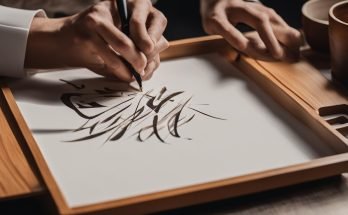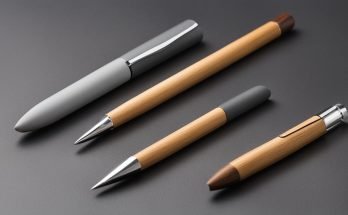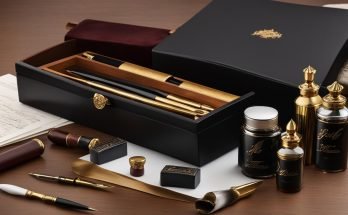Calligraphy Brushes: Discover the Secret to Mastering Your Skills Today!
Whether you’re a beginner or a professional, calligraphy brushes are essential tools for honing your calligraphy skills. Upgrade your calligraphy game with these high-quality brushes that are perfect for beginners and experts alike.
Key Takeaways:
- Calligraphy brushes are crucial for improving your calligraphy skills.
- Invest in high-quality brushes suitable for your skill level.
- Different types of calligraphy brushes offer unique characteristics and effects.
- Consider factors like bristles, handle material, and flexibility when choosing the right brush.
- Maintain your brushes properly to ensure their longevity.
Different Types of Calligraphy Brushes
Calligraphy brushes come in various types, each with its own unique characteristics. Whether you’re practicing Chinese calligraphy, Japanese Sumi-e painting, or watercolor calligraphy, choosing the right brush can make a significant difference in your artwork.
Chinese Calligraphy Brushes
If you’re interested in Chinese calligraphy, Chinese calligraphy brushes are a must-have tool. These brushes are known for their flexibility and versatility. They come in different sizes, allowing you to create varying line widths and strokes. The bristles are typically made from animal hair, such as goat, wolf, or horsehair, which provide excellent ink retention and smooth flow. Chinese calligraphy brushes are perfect for creating elegant and expressive characters.
Japanese Sumi-e Brushes
Japanese Sumi-e brushes are specifically designed for Sumi-e painting, which is a traditional Japanese ink wash painting technique. The bristles of these brushes are typically made from animal hair, such as horsehair or weasel hair. Sumi-e brushes are known for their ability to create bold and expressive strokes. They are ideal for capturing the essence of nature and creating dynamic brushwork.
Watercolor Calligraphy Brushes
If you’re interested in combining calligraphy with watercolor painting, watercolor calligraphy brushes are a great choice. These brushes are designed to hold water and pigment, allowing you to create beautiful and vibrant lettering. Watercolor calligraphy brushes typically have soft bristles made of synthetic materials, which provide excellent control and precision. They are perfect for creating stunning watercolor effects in your calligraphy.
| Type of Brush | Characteristics | Best For |
|---|---|---|
| Chinese Calligraphy Brushes | Flexible and versatile | Creating elegant and expressive characters |
| Japanese Sumi-e Brushes | Bold and expressive strokes | Sumi-e painting and dynamic brushwork |
| Watercolor Calligraphy Brushes | Soft bristles for control and precision | Creating beautiful watercolor effects in calligraphy |
By understanding the different types of calligraphy brushes available, you can choose the one that best suits your artistic style and preferred techniques. Whether you’re practicing Chinese calligraphy, Japanese Sumi-e, or watercolor calligraphy, these brushes will help you elevate your artwork and bring your creative vision to life.
Choosing the Right Brush for Your Needs
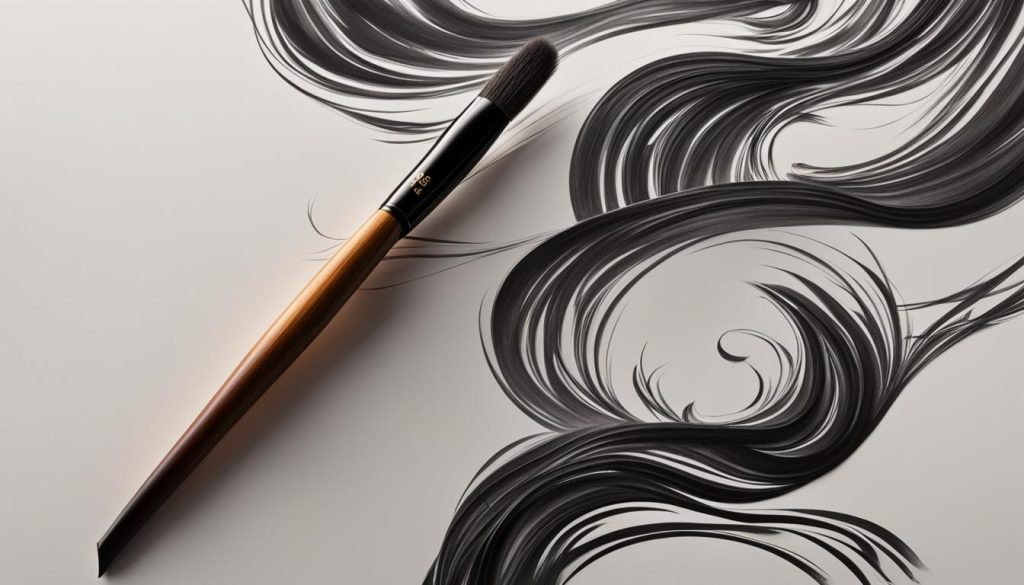
When it comes to calligraphy, choosing the right brush can make all the difference in the quality and style of your lettering. Different brushes offer unique characteristics that can enhance your calligraphy experience. Here are a few key factors to consider when selecting a calligraphy brush:
Types of Bristles
One of the first things to consider is the type of bristles on the brush. Soft tip calligraphy brushes, often made from natural hair like sable or goat hair, are great for creating delicate and fine lines. These brushes offer a level of flexibility that allows for smooth and precise strokes. On the other hand, if you prefer more control and rigidity in your brush strokes, you may opt for stiff bristle brushes. These brushes, often made from synthetic materials or animal hairs like wolf or horsehair, provide a firmness that allows for more defined and controlled lettering.
Handle Material
Another aspect to consider is the material of the brush handle. Bamboo handle brushes provide a traditional and natural feel, offering a unique tactile experience while practicing calligraphy. Synthetic calligraphy brushes, made from materials like nylon or taklon, are durable and easy to maintain. They are a versatile option for both beginners and professionals.
Flexibility and Control
The desired level of flexibility and control is important when choosing a calligraphy brush. Soft tip brushes offer more flexibility, allowing for graceful and flowing strokes. Stiff bristle brushes, on the other hand, provide greater control and precision. Consider your personal style and the type of calligraphy you wish to achieve to determine the level of flexibility and control that suits your needs.
Table: Calligraphy Brush Characteristics
| Brush Type | Bristle Material | Handle Material | Flexibility | Control |
|---|---|---|---|---|
| Soft Tip | Natural hair (sable, goat) | Bamboo or synthetic | High | Low |
| Stiff Bristle | Synthetic or natural hair (wolf, horse) | Synthetic | Low | High |
| Bamboo Handle | Natural or synthetic hair | Bamboo | Medium | Medium |
| Synthetic | Synthetic hair (nylon, taklon) | Synthetic | Medium | Medium |
By considering these factors, you can choose a calligraphy brush that best suits your needs and preferences. Whether you opt for a soft tip brush for delicate lettering or a stiff bristle brush for precise control, the right brush can elevate your calligraphy skills and create stunning works of art.
Natural Hair vs. Synthetic Brushes
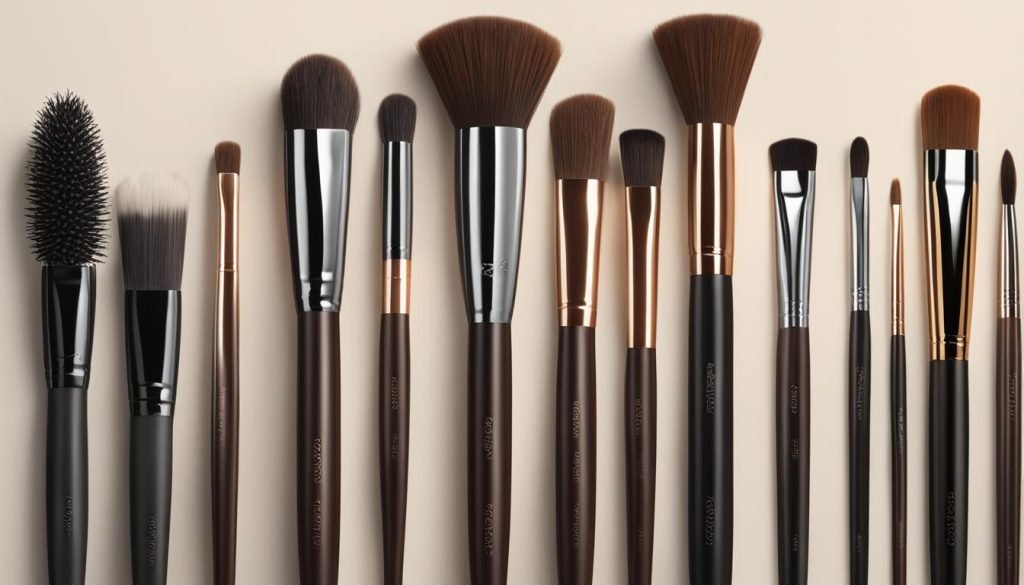
When it comes to calligraphy brushes, there are two main types to consider: natural hair brushes and synthetic brushes. Each type has its own unique characteristics and benefits, so let’s take a closer look at the differences between them.
Natural hair brushes:
Natural hair brushes are made from a variety of animal hairs, such as sable hair, goat hair, wolf hair, and horsehair. These brushes are highly regarded for their ability to hold a large amount of ink, creating beautiful, flowing strokes. The natural bristles offer a smooth and consistent ink flow, allowing for precise control and delicate lettering. They are often favored by professional calligraphers for their quality and performance.
Synthetic brushes, on the other hand, are made from nylon or other synthetic materials. These brushes are more affordable and easier to care for, making them a popular choice for beginners and those on a budget. While they may not offer the same level of ink absorption as natural hair brushes, synthetic brushes still provide a smooth and consistent flow of ink. They are durable and maintain their shape well over time, making them a reliable option for calligraphy practice and everyday use.
“Natural hair brushes offer a smooth and consistent ink flow, while synthetic brushes are more affordable and easier to care for.”
Choosing the right type of brush:
When deciding between natural hair brushes and synthetic brushes, consider your needs and preferences. If you value the traditional and authentic feel of calligraphy, natural hair brushes may be the better choice for you. However, if you’re just starting out or looking for a more budget-friendly option, synthetic brushes can still deliver excellent results.
Ultimately, the choice between natural hair brushes and synthetic brushes comes down to personal preference. Whether you prefer the luxurious feel of natural hair or the practicality of synthetic materials, both options can help you create beautiful calligraphy.
| Natural Hair Brushes | Synthetic Brushes |
|---|---|
| Made from animal hairs | Made from synthetic materials |
| Hold a large amount of ink | Provide a smooth and consistent flow of ink |
| Preferred by professional calligraphers | More affordable and easier to care for |
Maintaining Your Calligraphy Brushes
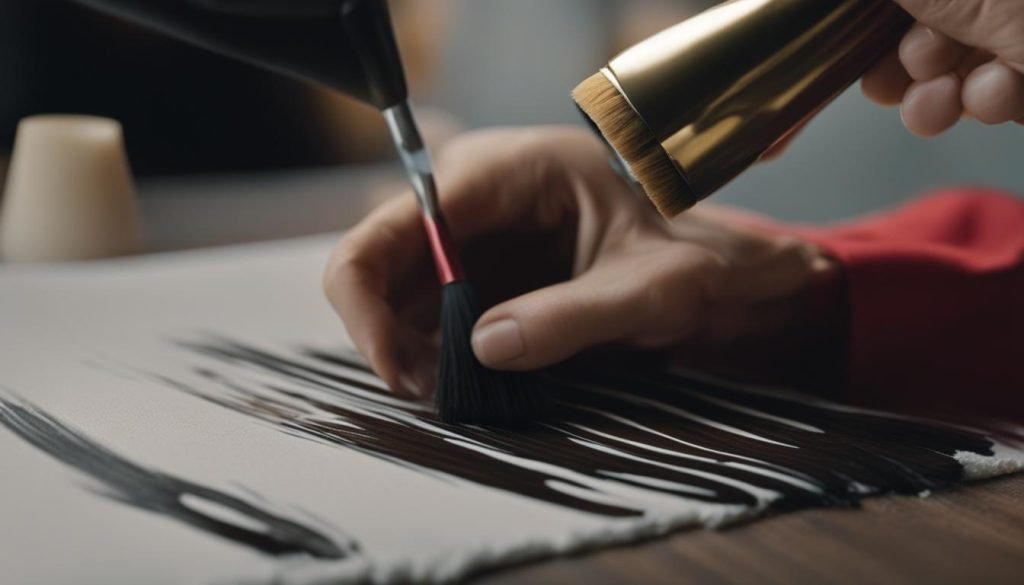
Proper maintenance is essential for keeping your calligraphy brushes in optimal condition. By taking care of your brushes, you can ensure their longevity and consistent performance. Follow these tips for brush care and cleaning to keep your brushes in top shape.
Brush Care and Cleaning
- After each use, gently rinse your brush with warm water to remove any excess ink or paint.
- Use a mild soap or brush cleaner to thoroughly clean the bristles. Gently lather the soap and rinse until the water runs clear.
- Avoid using hot water or harsh cleaning agents, as they can damage the bristles.
- Gently reshape the bristles with your fingers and allow the brush to air dry. Avoid using a hairdryer or placing the brush near a heat source, as this can damage the bristles.
- Store your brushes upright or with the bristles facing up to maintain their shape. Avoid storing them in a damp environment, as this can cause mold or mildew to develop.
Regularly cleaning and caring for your calligraphy brushes will not only prolong their lifespan but also ensure that they perform at their best. With proper maintenance, you can continue to create beautiful calligraphy for years to come.
“Taking care of your brushes is like taking care of your tools. It shows respect for the craft and ensures that your brushes will serve you well for a long time.”
It’s important to remember that different types of brushes may require specific cleaning methods. For example, brushes with natural hair bristles may need more gentle cleaning compared to synthetic brushes. Always refer to any care instructions provided by the manufacturer to ensure proper cleaning and maintenance.
Additionally, if you enjoy brush pen calligraphy, it’s crucial to clean the brush tips regularly to prevent clogging and ensure smooth ink flow. Use a soft cloth or tissue to wipe away any excess ink and avoid pressing too hard, as this can damage the bristles. By maintaining your brush pens, you can create consistent and flawless lettering every time.
| Brush Care Tips | Brush Cleaning Techniques | Storage Recommendations |
|---|---|---|
| Use a mild soap or brush cleaner to clean the bristles | Gently lather the soap and rinse until the water runs clear | Store brushes upright or with bristles facing up |
| Avoid using hot water or harsh cleaning agents | Reshape the bristles with your fingers and allow the brush to air dry | Avoid storing brushes in a damp environment |
Mastering Brush Stroke Techniques
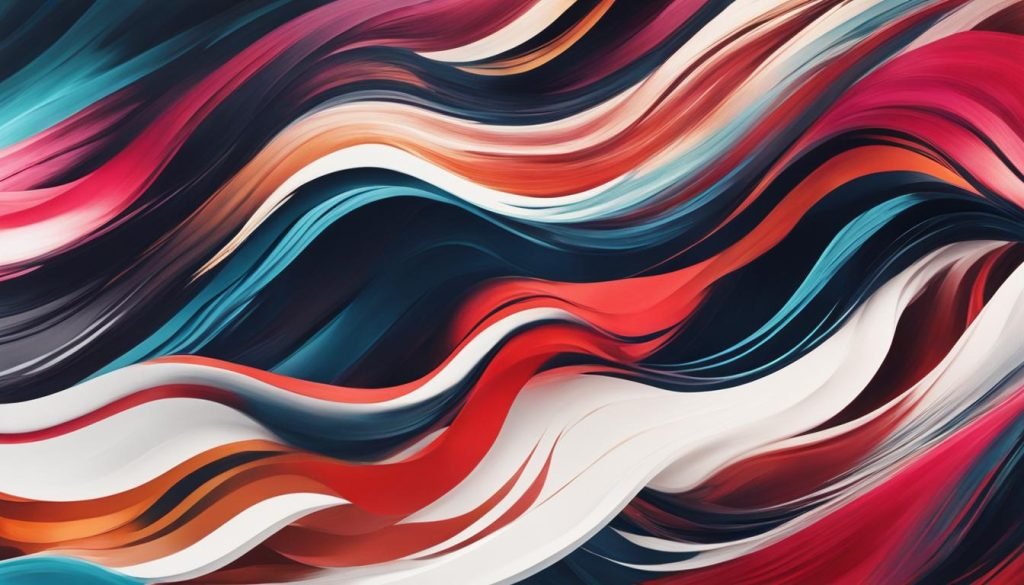
Mastering various brush stroke techniques is key to creating beautiful and expressive calligraphy. Whether you’re using traditional calligraphy brushes or brush pens, understanding the different techniques and practicing them regularly will help you achieve the desired look and feel in your lettering.
Understanding Brush Pen Calligraphy
Brush pen calligraphy is a popular choice among calligraphers for its convenience and versatility. It allows you to create both thin and thick lines by adjusting the pressure on the brush tip. Experiment with different brush pen sizes to achieve different stroke widths and effects. Practice consistent pressure control to create smooth and fluid strokes.
Experimenting with Brush Stroke Variations
Explore different brush stroke variations to add depth and personality to your calligraphy. Practice thin and thick lines to create contrast and visual interest. Experiment with curves and flourishes to create elegant and decorative lettering. By mastering these variations, you can bring your calligraphy to life and make it uniquely yours.
Developing Calligraphy Brush Pressure Control
Calligraphy brush pressure control is crucial to achieving the desired effects in your lettering. Apply light pressure for thin lines and heavy pressure for bold strokes. Practice controlling the pressure throughout each stroke to create consistent and balanced letterforms. With time and practice, you’ll develop a natural and intuitive sense of pressure control.
| Brush Stroke Technique | Description |
|---|---|
| Thin Lines | Create delicate and precise lines by applying light pressure. |
| Thick Lines | Achieve bold and expressive strokes by applying heavy pressure. |
| Curves | Add elegance and fluidity to your lettering with smooth curves. |
| Flourishes | Enhance the decorative aspect of your calligraphy with elaborate flourishes. |
Choosing the Right Paper for Your Calligraphy
When it comes to calligraphy, the choice of paper can significantly impact the outcome of your work. Different papers offer unique textures and qualities that can enhance the beauty and expressiveness of your lettering. Take a moment to explore the different options and find the perfect paper for your calligraphy needs.
Consider the Texture
Texture plays a crucial role in calligraphy, as it affects how the ink adheres to the paper and how your brush glides across the surface. Smooth papers are ideal for achieving precise and detailed lettering, providing a clean and crisp finish. On the other hand, textured papers add depth and character to your writing, creating a more artistic and visually captivating effect.
Weight and Absorbency
Another important factor to consider is the weight and absorbency of the paper. Heavier-weight papers can withstand the pressure of brush strokes and prevent bleed-through, making them suitable for more intricate and layered calligraphy. Some papers are specifically designed for calligraphy and have a higher absorbency, allowing the ink to dry quickly and reducing smudging.
Experiment and Find Your Style
Every calligrapher has their own preferences when it comes to paper. Don’t be afraid to experiment with different types and textures to find the one that best suits your style and preferences. Consider the effect you want to achieve with your calligraphy and choose a paper that enhances those characteristics. With the right paper, your calligraphy will truly come to life.
| Paper Type | Texture | Weight | Absorbency |
|---|---|---|---|
| Smooth | Smooth surface | Lightweight to heavyweight | Low to moderate |
| Textured | Rough or grainy surface | Lightweight to heavyweight | Low to moderate |
| Specialty Calligraphy Paper | Various textures available | Medium to heavyweight | High |
| Watercolor Paper | Rough or cold-pressed surface | Lightweight to heavyweight | High |
Exploring Different Scripts and Styles
Calligraphy is a versatile art form that encompasses a wide range of scripts and styles. Each script has its own unique characteristics, and choosing the right calligraphy brush is essential for achieving the desired effect. Whether you’re working with traditional Chinese characters, elegant Arabic script, or modern typography, selecting the appropriate brush will greatly enhance your calligraphy skills.
Calligraphy Brushes for Different Scripts
When it comes to calligraphy brushes, different scripts require different brush sizes and characteristics. For delicate and intricate scripts, such as copperplate or Spencerian, a smaller brush with a fine tip is preferred to achieve the intricate details. On the other hand, for bold scripts like Gothic or Blackletter, a larger brush with more flexibility and a wider tip is ideal for creating thick and expressive strokes.
For scripts that require both delicate and bold strokes, such as Italic or Uncial, a versatile brush with a medium tip can provide the perfect balance. It allows you to achieve both thin and thick lines, giving your calligraphy depth and dimension. Experiment with different brush sizes and shapes to find the ones that complement your preferred scripts and styles.
Calligraphy Brushes for Different Ink Types
In addition to scripts, the choice of ink also plays a significant role in calligraphy. Different ink types require different brush characteristics to achieve the desired effect. Traditional Chinese ink, for example, is thick and rich, requiring a brush with stiffer bristles to handle the density of the ink. The brush needs to hold a large amount of ink to create bold and expressive strokes.
Watercolor calligraphy, on the other hand, requires a brush with softer bristles that can hold water and pigment without compromising the delicate nature of the medium. Watercolor brushes typically have a blend of natural and synthetic bristles to provide the necessary control and flexibility for creating vibrant and translucent lettering.
Experimenting with different ink types and brush characteristics will allow you to explore a wide range of effects and styles in your calligraphy. Keep in mind the specific requirements of the script and ink you’re using, and choose the appropriate brush to enhance your artistic expression.
| Script | Recommended Brush Size | Brush Characteristics |
|---|---|---|
| Copperplate | Small | Fine tip for intricate details |
| Gothic | Large | Wide tip for thick and bold strokes |
| Italic | Medium | Versatile with medium tip for both thick and thin lines |
Creating Detailed and Expressive Lettering
When it comes to calligraphy, creating detailed and expressive lettering is key to making your work stand out. With the right calligraphy brushes, you can achieve intricate details and bold strokes that add depth and personality to your letterforms.
If you’re looking to create fine details in your calligraphy, choose brushes with small tips or fine points. These brushes allow for precise control and delicate strokes, perfect for adding intricate embellishments or decorative elements to your lettering. The fine tip of the brush ensures that each stroke is crisp and clean, resulting in beautifully defined lines.
For more expressive lettering, opt for brushes with larger tips and more flexibility. These brushes are ideal for creating bold and dynamic strokes that give your calligraphy a sense of movement and energy. With these brushes, you can experiment with variations in stroke width, emphasizing certain parts of your letterforms and adding a sense of depth and dimension.
“With the right calligraphy brushes, you can achieve intricate details and bold strokes that add depth and personality to your letterforms.”
Remember to consider the type of ink or paint you’re using with your calligraphy brushes. Different mediums may require different brushes to achieve the desired effect. Experiment with a variety of brushes to find the ones that work best for your style and preferred level of detail.
| Brush Type | Features |
|---|---|
| Small Tip/Fine Point Brushes | Ideal for creating intricate details and delicate strokes. |
| Large Tip/Flexible Brushes | Perfect for bold and expressive strokes, adding movement to your lettering. |
With the right calligraphy brushes for detailed work and expressive strokes, you can elevate your lettering and create stunning pieces of art. Whether you’re working on a small-scale project or a large-scale composition, the right brushes will help you bring your vision to life with precision and creativity.
Brush Up on Your Calligraphy Skills
Calligraphy brushes are not limited to traditional calligraphy; they can also be used in various art forms. Whether you’re adding flourishes and embellishments to your lettering or creating large characters and compositions, calligraphy brushes offer endless possibilities for artistic expression.
When it comes to incorporating calligraphy brushes into your art, it’s important to experiment with different techniques and brush styles. For creating intricate details and delicate flourishes, opt for brushes with a fine point or small tip. These brushes allow for precise control and intricate line work, perfect for adding intricate details to your artwork.
On the other hand, if you’re aiming for bold and expressive strokes, consider using brushes with more flexibility and a larger tip. These brushes are ideal for creating dynamic brushwork and capturing the energy and movement in your artwork. They lend themselves well to creating large-scale compositions and characters, making a powerful impact on your audience.
With calligraphy brushes, you have the power to bring your artistic vision to life. So, why not explore the endless possibilities and brush up on your calligraphy skills in the captivating world of art?
Calligraphy Brushes for Artistic Flourishes
Calligraphy brushes are perfect for adding artistic flourishes to your artwork. By varying the pressure, speed, and angle of the brush, you can create elegant curves, loops, and decorative elements that add a touch of sophistication to your lettering. Experiment with different brush sizes and styles to achieve the desired effect, whether it’s a delicate swirl or a bold flourish.
| Brush Type | Description |
|---|---|
| Round Brush | Ideal for creating circular shapes and smooth curves. |
| Flat Brush | Perfect for creating wide strokes and sharp edges. |
| Angled Brush | Great for creating intricate angles and precise lines. |
| Detail Brush | Useful for adding fine details and intricate patterns. |
Calligraphy Brushes for Large Characters
When it comes to creating large characters, calligraphy brushes are the go-to tool. Their versatility and ability to hold a large amount of ink make them ideal for creating bold and powerful lettering. Choose brushes with a larger tip and stiffer bristles to achieve the desired effect, allowing you to create impactful and visually striking characters that demand attention.
| Brush Size | Description |
|---|---|
| Large | Ideal for creating oversized characters with bold strokes. |
| Extra Large | Perfect for creating monumental characters with impactful strokes. |
| Jumbo | Great for creating larger-than-life characters with dramatic flair. |
Conclusion
In conclusion, investing in professional-grade, high-quality calligraphy brushes is essential for taking your calligraphy skills to the next level. These brushes offer superior performance and durability, allowing you to create stunning works of art with ease.
By choosing the right brushes and techniques, you can enhance your calligraphy experience and unlock your artistic potential. Whether you’re a beginner or an experienced calligrapher, professional-grade calligraphy brushes can make a significant difference in the quality and precision of your lettering.
High-quality calligraphy brushes are designed to provide optimal ink flow, control, and flexibility. They are crafted using the finest materials and meticulous craftsmanship, ensuring that they can withstand the test of time and frequent use. With these brushes in your arsenal, you can achieve beautiful strokes, intricate details, and expressive lettering.
So why settle for anything less than the best? Invest in professional-grade, high-quality calligraphy brushes and elevate your calligraphy skills to new heights. Experience the joy of creating masterful lettering and enjoy the satisfaction of using tools that are designed to help you succeed.
FAQ
Are calligraphy brushes suitable for beginners?
Yes, calligraphy brushes are perfect for beginners as well as professionals. They come in a variety of styles and sizes to cater to different skill levels.
What are the different types of calligraphy brushes?
There are Chinese calligraphy brushes known for their flexibility, Japanese Sumi-e brushes known for their bold strokes, and watercolor calligraphy brushes ideal for vibrant lettering.
How do I choose the right calligraphy brush?
Consider the bristle type, handle material, and flexibility you desire. Soft tip brushes are great for delicate lettering, while stiff bristle brushes offer more control.
Should I choose natural hair or synthetic calligraphy brushes?
Natural hair brushes like sable, goat, wolf, and horsehair provide a smooth ink flow and are great for holding a large amount of ink. Synthetic brushes are more affordable and easier to maintain.
How do I maintain my calligraphy brushes?
Clean your brushes after each use, store them properly, and clean brush pen tips regularly to prevent clogging.
What are some brush stroke techniques for calligraphy?
Practice thin and thick lines, curves, and flourishes. Experiment with brush pen calligraphy for different effects and styles.
What type of paper should I use for calligraphy?
Consider the texture, weight, and absorbency of the paper. Smooth, heavyweight paper is ideal for detailed work, while textured paper adds depth to your lettering.
Can calligraphy brushes be used for different scripts and styles?
Yes, different scripts require different brush sizes and characteristics. You can also experiment with different ink types to achieve various effects.
How can I create detailed and expressive lettering with calligraphy brushes?
Choose brushes with a fine point for intricate details and brushes with more flexibility and a larger tip for bold strokes.
Can calligraphy brushes be used for art besides traditional calligraphy?
Absolutely! Calligraphy brushes are great for adding flourishes and embellishments, creating large characters or compositions, and exploring different art forms.
How can investing in professional-grade calligraphy brushes enhance my skills?
Professional-grade brushes offer higher quality materials and craftsmanship, allowing for better control and more precise strokes, ultimately enhancing your calligraphy skills.


